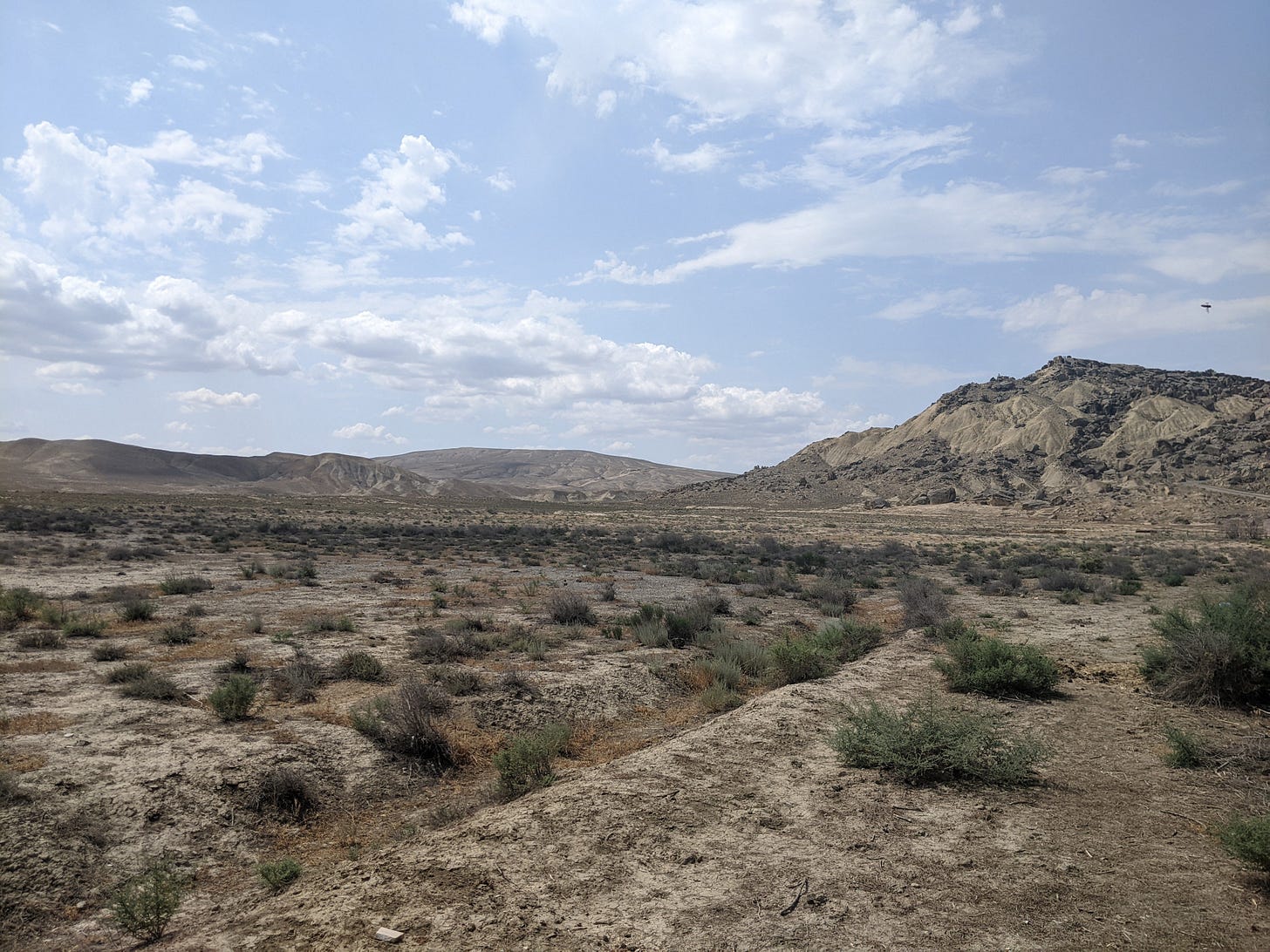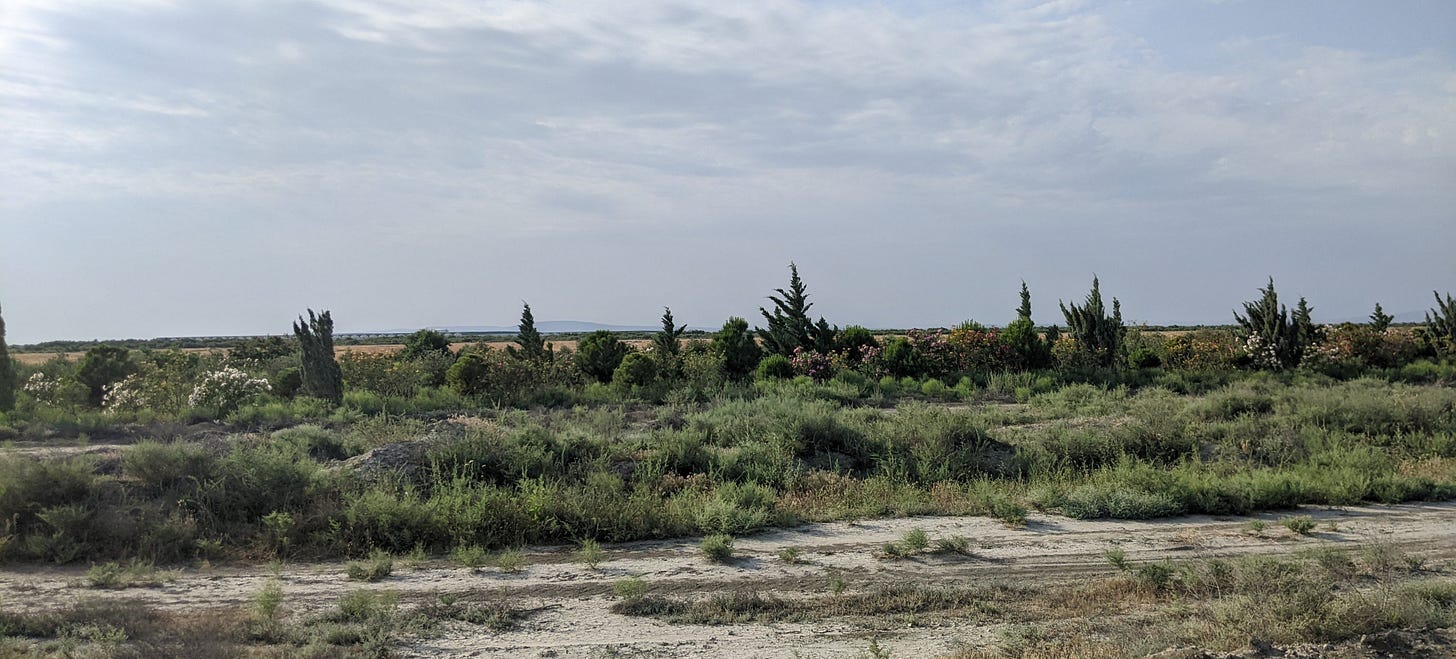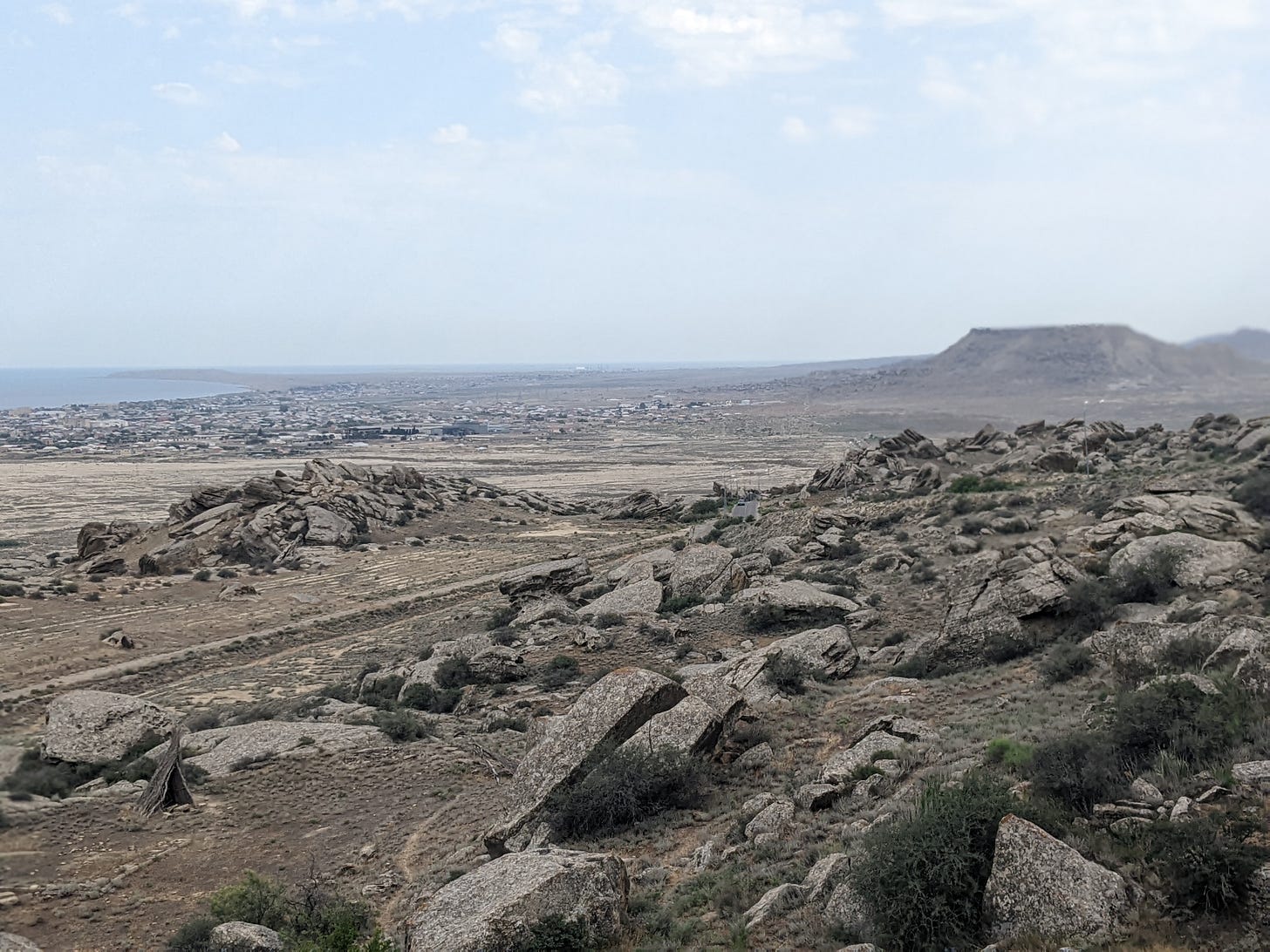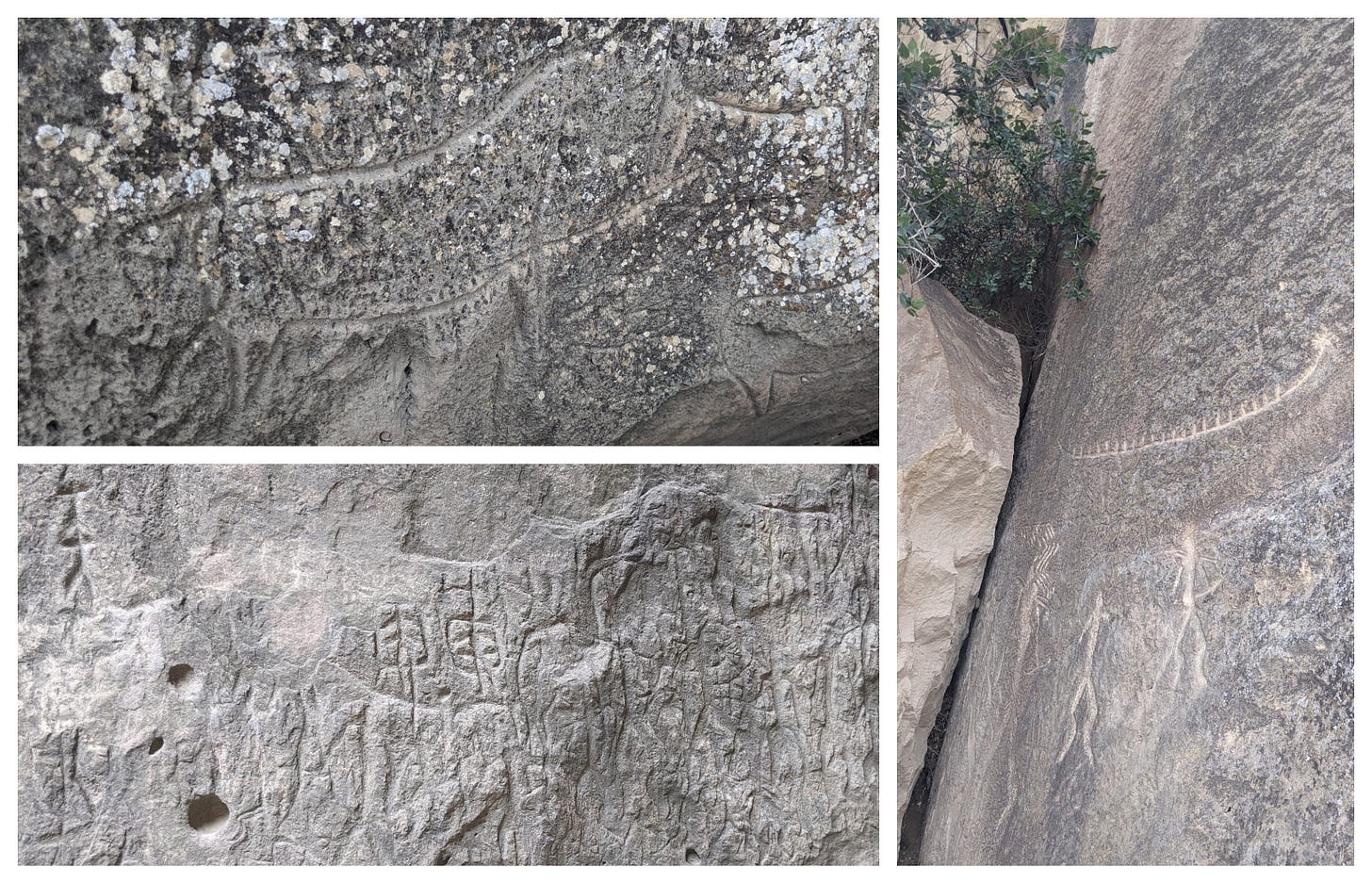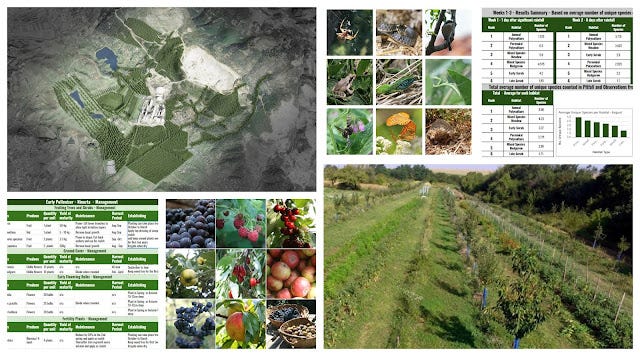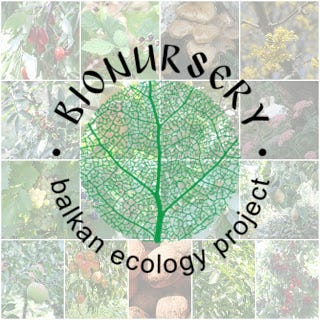After a week in the beautiful city of Baku I headed south to the Hirkan National Park on the Iranian border. On the way are the flat-top mountains and active mud volcanoes of Gobustan that have been home to humans for 10's of thousands of years. This is evident by the 6000+ petroglyphs, ancient rock carvings that depict animals, people, and religious symbols, that can be found in the area. During this post we'll take a look at some of the rock carvings and plants that grow among the rocky terrain, with a focus on the edible species.
It's immediately striking as you exit Baku that you are in a desert. As you can see from this previous post on Baku street plants and parks, it is a stark contrast.
Equally striking is the attempt to regreen the region with vast areas of young trees planted as part of a 30 million tree reforestation plan that started in 2004. The planting is focused on the Absheron peninsula and Gobustan region surrounding Baku. The trees that I saw appear to be doing very well and much of the highway borders have also been planted out with a polyculture of 4-8 rows of trees and shrubs including Nerium oleander, Cupressus sempervirens and Pinus sp. among others.
About 64 km southwest of Baku just off the coastal road heading inland you enter Gobustan National Park, an extraordinary tapestry of ancient wonders. It's hard to believe when looking over the rugged landscapes and weathered rock formations that in the past the area was a lush forest but not so difficult to believe why our ancient ancestors would have choose this location to settle. The high ground provides excellent 360 views of the surrounding area, the terrain provides great rainwater catchment potential and the sea is nearby.
The museum before the park is very good and provides a great overview of the area and the petroglyphs of this UNESCO World Heritage Site. The oldest petroglyphs are thought to be around 40000 years old. Included in the carvings are boats (right) which is a pretty good indicator that this technology was around during the prehistoric period.
As well as the prehistoric rock art, natural forces have produced some great work, enhanced by the tree, shrub and herbs growing among the rocks.
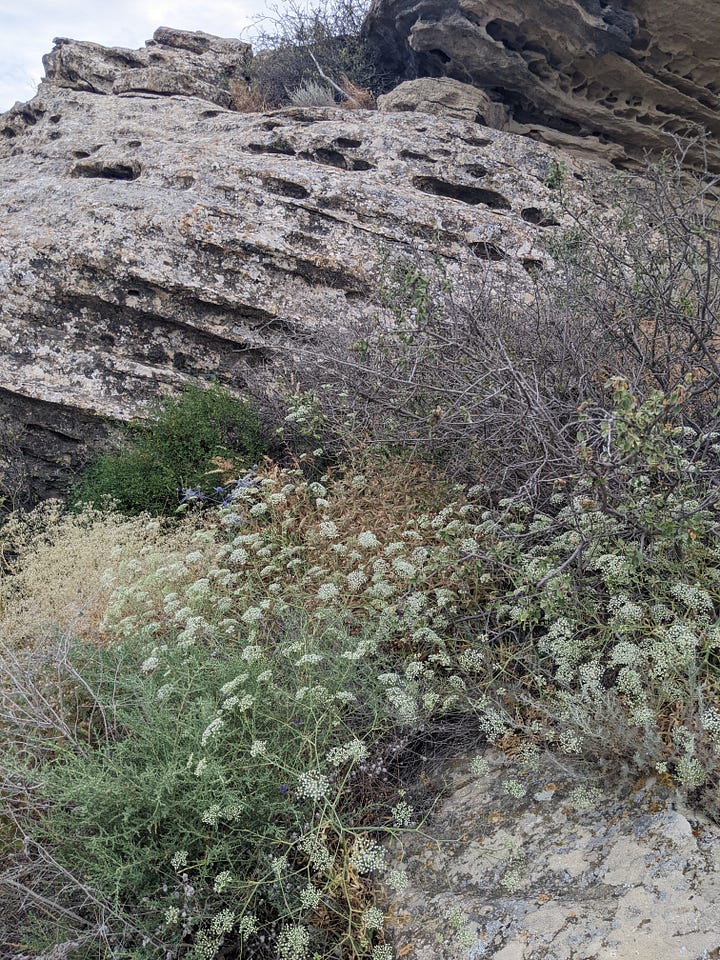
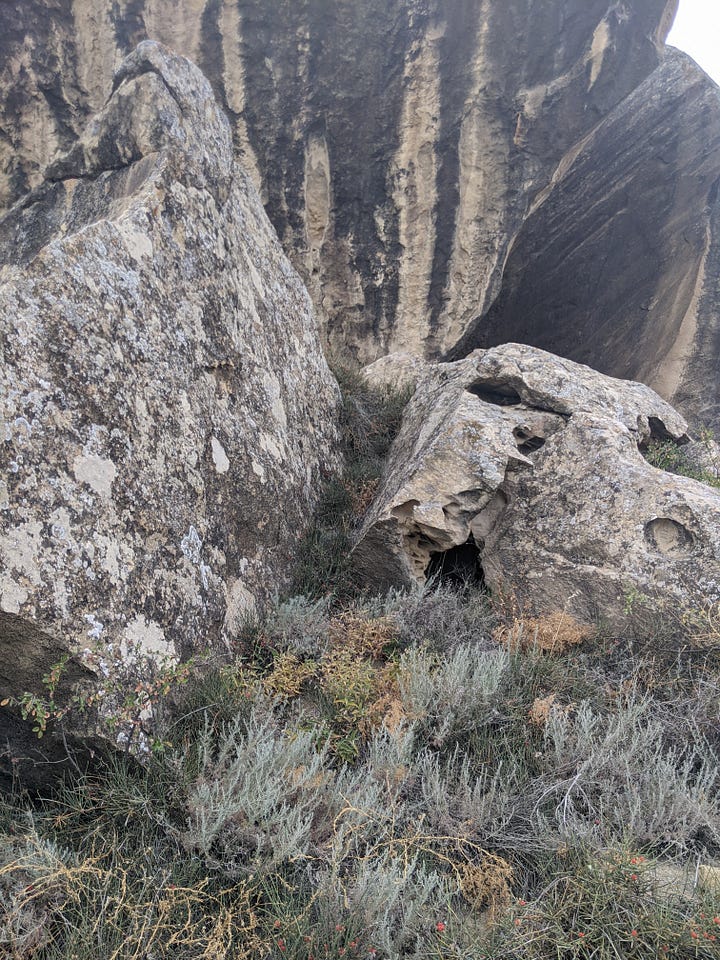
Hippophae rhamnoides - Sea Buckthorn appeared to be the dominant shrub species in the area, growing along with a variety of herbs
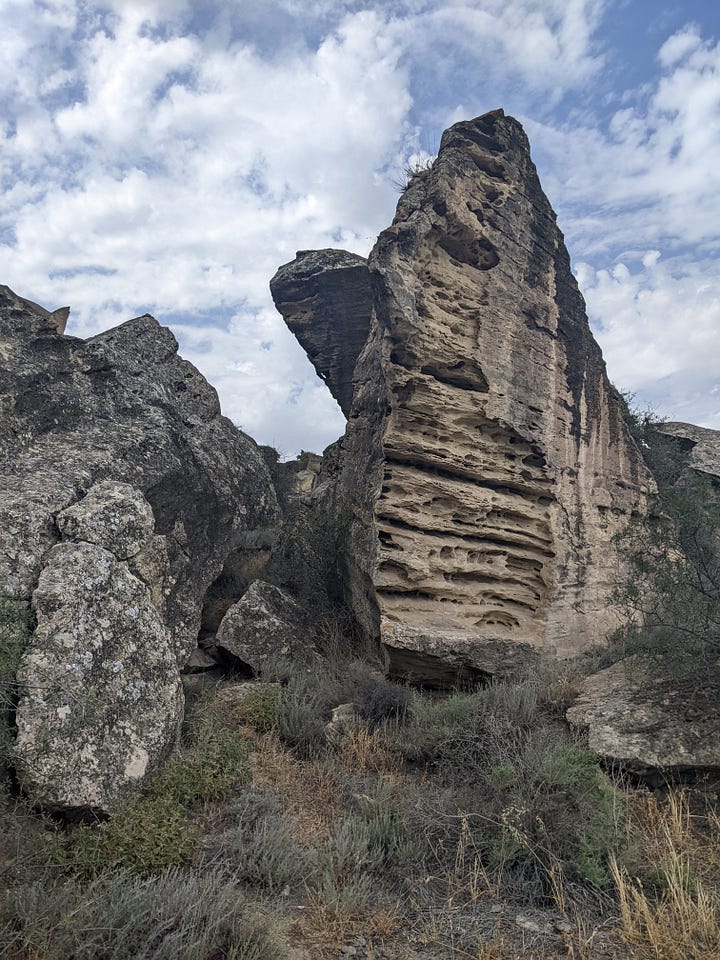

Wild Ficus carica cv. - Fig is also very common. Interesting to see the prostrate habit of the figs in this area, in response to the windy conditions probably. The large fruits were soft and ripe but completely tasteless on a number of the plants I tried.
There are hundreds of figs growing in the area, not so common is Elaeagnus angustifolia - Russian Olive (left)
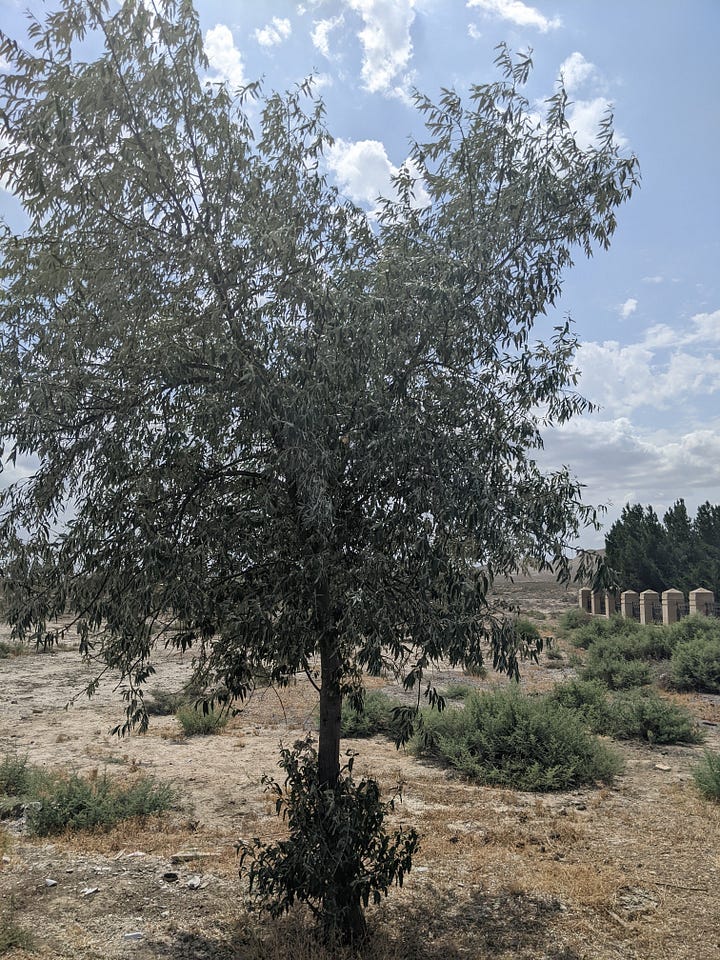

Punica granatum - Pomegranate is also common growing within the crevices of the rocky terrain.
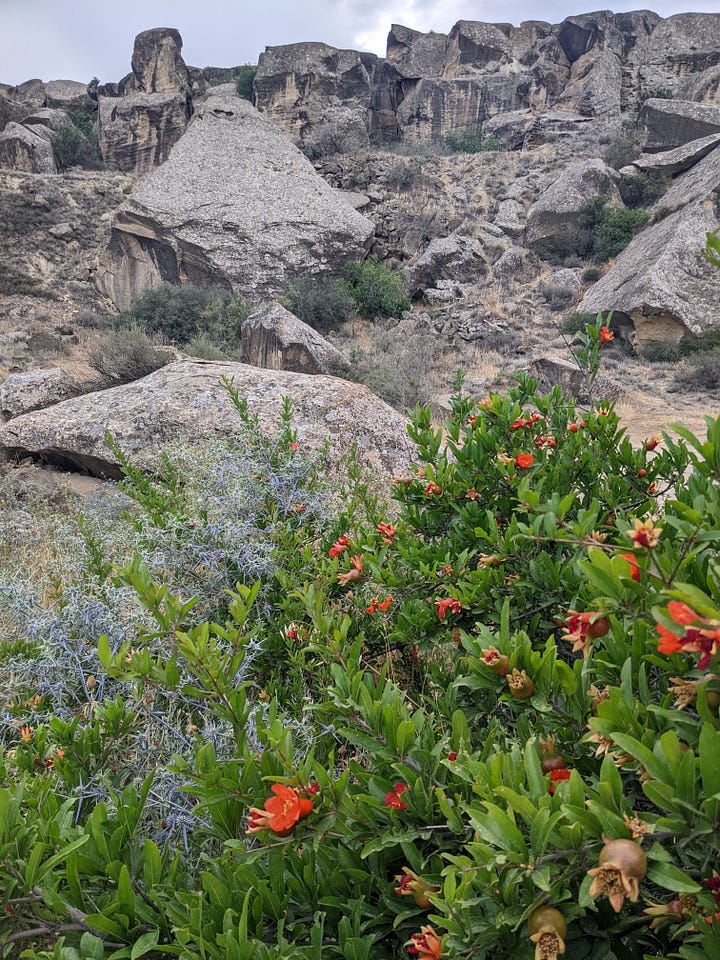
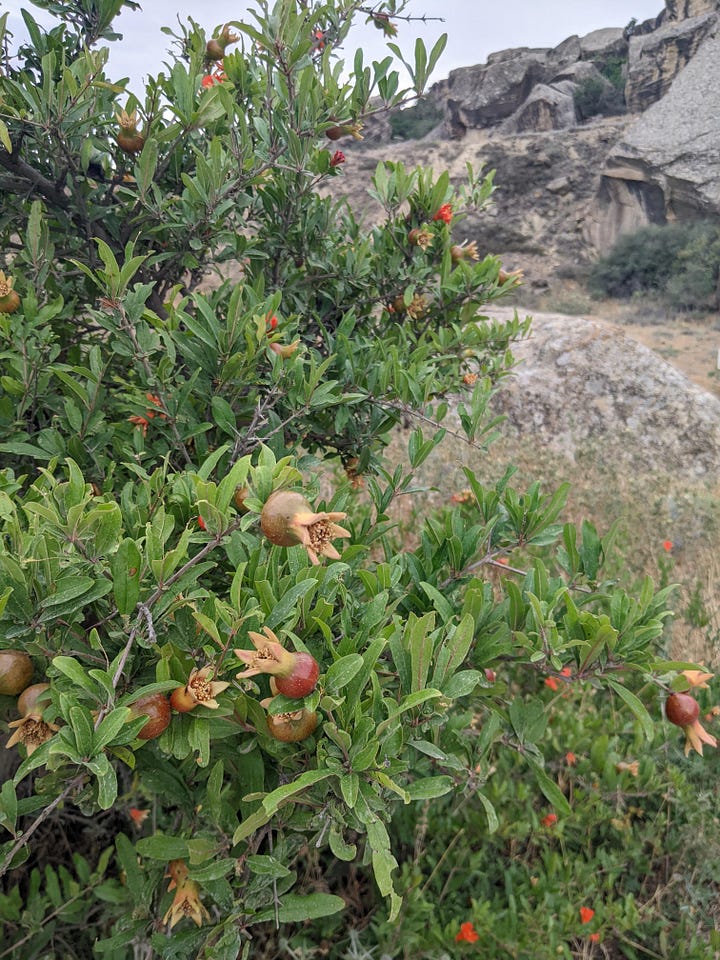
The Punica granatum - Pomegranate were full of bees and hoverflies. I did not mange to get a photo of the hoverfly but it was much larger than the hoverflies that frequent our gardens. The bee is a Wool Carder Bee - Anthidium sp. and seems common here and especially keen on pomegranate nectar/pollen.
Other flowering plants in the area include Eryngium spp. possibly E. amethystinum (right), a perennial plant with purple flowers and spiny leaves and the low growing evergreen shrub Ephedra distachya was looking comfortable at the base of the rocks. The red fruits of Ephedra distachya (left) are edible with a sweet but rather insipid flavor according to pfaf.org

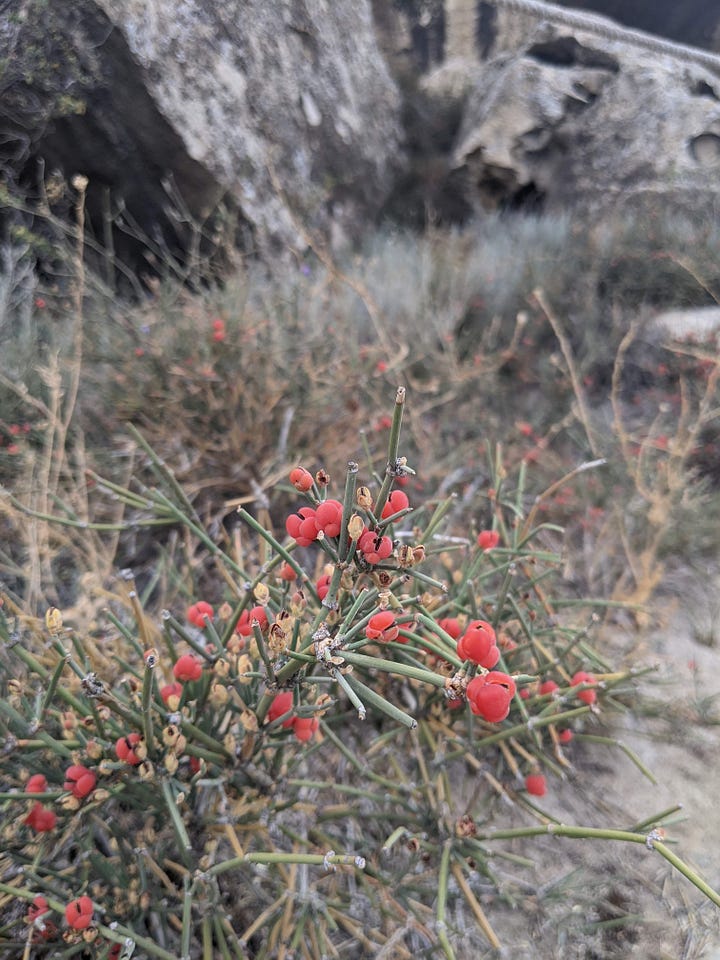
Pretty sure the below plant is Lycium ruthenicum - Black Goji Berry based on the flower and the taste of the fruit. It was in the Gobustan Archaeological site garden so it could have been planted. It does not seem to be common to this region. Like it’s Balkan relative, Lycium barbarum - Goji Berry, the flowers and fruit appear on these plants at the same time and throughout the growing season.
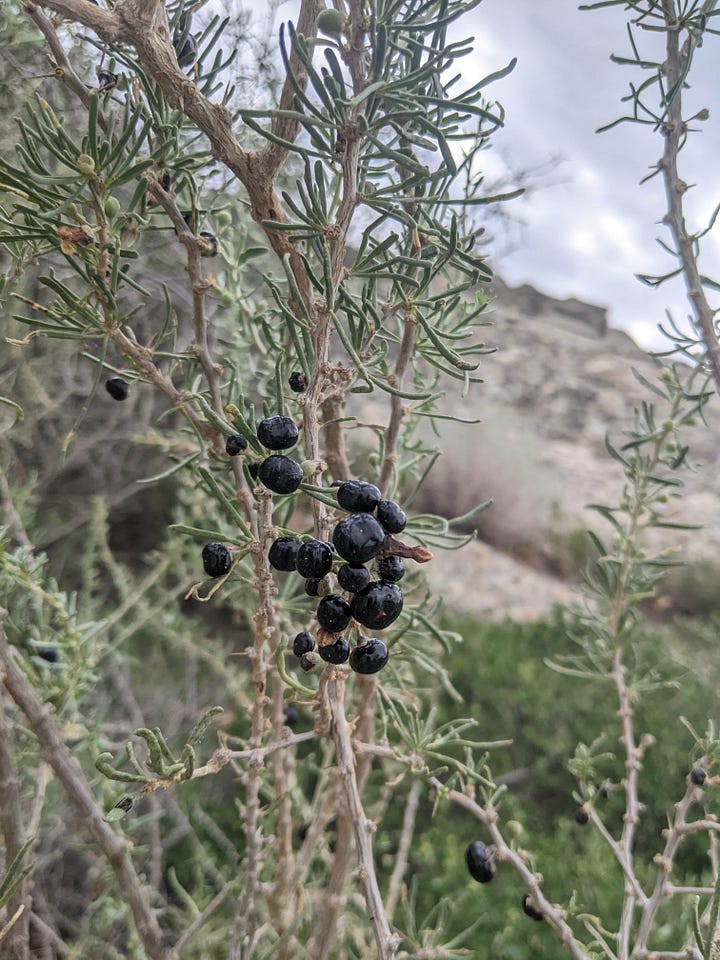
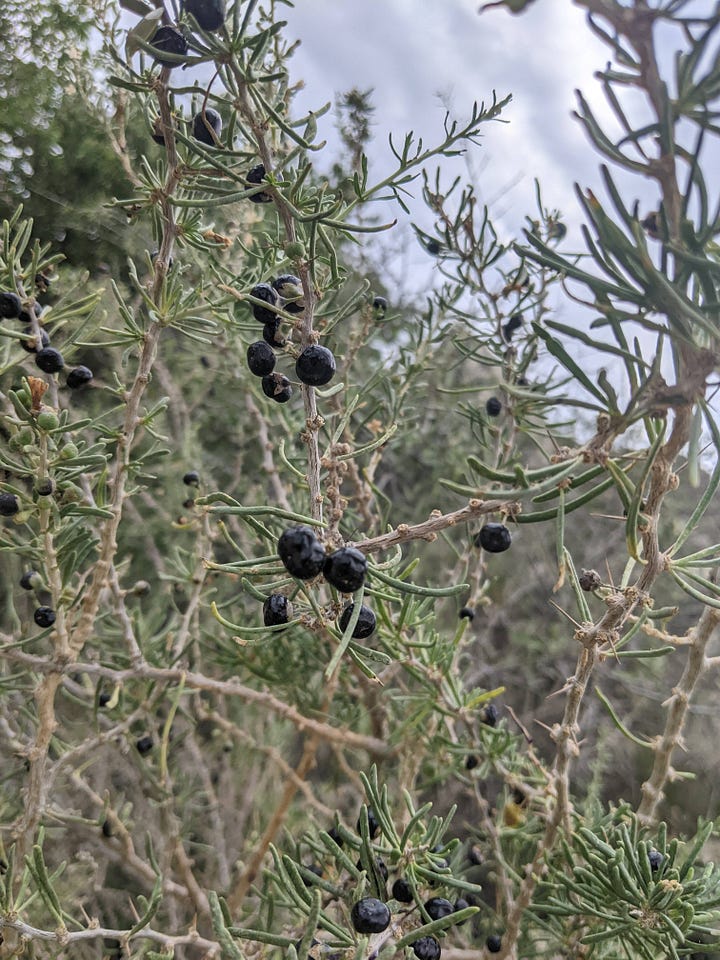
That’s all for this week, thanks for reading !
Support Our Project
If you appreciate the work we are doing you can show your support in several ways.
Become a member of the Bloom Room. A $70 annual subscription to our Substack provides you with access to live sessions, design tutorials, a members forum and more, see details here.
Make a purchase of plants or seeds from our Nursery or Online Store
Joining us for one of our Practical Courses or Online Courses
Comment, like, and share our content on social media.
Regenerative Landscape Design - Online Interactive Course
Want to learn how to design, build and manage regenerative landscapes? Join us on our Regenerative Landscape Design - Online Interactive Course. We look forward to providing you with the confidence, inspiration, and opportunity to design, build and manage regenerative landscapes, gardens, and farms that produce food and other resources for humans while enhancing biodiversity.
You can access the course material at anytime and join the live sessions and interactive forums that run from May - Oct every year. All members of the Bloom Room receive a 500 EUR discount. To take up this offer all you have to do is become an annual subscribers to our Substack and register here with the promo code BLOOM.
I look forward to you joining !
We offer a diversity of plants and seeds for permaculture, forest gardens, and regenerative landscapes including a range of fruit and nut cultivars. We Deliver all over Europe from Nov - March. - Give a happy plant a happy home :)





